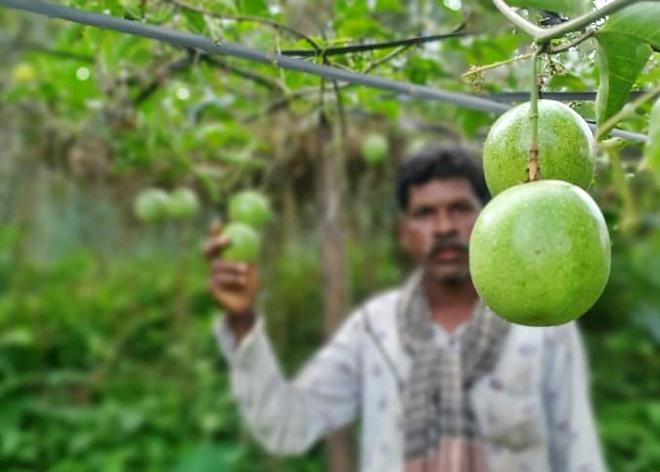The search for a sustainable income from a short-term crop after a recurring loss in ginger cultivation led Binu Thomas, a farmer at Krishangiri in Wayanad district, to the cultivation of passion fruit.

The farmer started the cultivation on 30 cents as an experiment around five years ago, and he has expanded the cultivation on five acres of rented land now.
Low cost to maintain the farm, comparatively low pest attacks and a steady demand for the produce in the market are the major attractions of passion fruit cultivation, Mr. Binu said.
“I have spent nearly ₹ 1, 00,000 for an acre of cultivation and I am getting an average profit of ₹2.5 lakh a year,” said Mr. Binu.
The farmer usually sells the product at the local market and the produce is exported to metro cities.
“As many farmer producer companies in the district have started to make value-added products, we expect a better demand for the produce in the coming days,” Venu, another farmer at Ambalavayal said.
Though farmers had planted the fruit on their orchards for domestic use, the commercial potential of the product has been identified and tapped recently, he added.
Leaf curling disease, fungus attack on the fruits, especially during the rainy season, and wilt diseases affecting the vine are the major threats of cultivation but they could be easily tackled by timely monitoring, he said.
Hundreds of farmers from the district have tried their luck in passion fruit cultivation on rented lands in different parts of Karnataka since the production cost, especially the labour cost, is very low there.
The farmers are cultivating mainly two varieties of the fruit, yellow and purple varieties.
The purple variety fetches a good price in the market as it is a sweet. The yellow variety gets low prices in the market and it is mainly used for making value-added products such as squash and juices owing to its sour taste. But the cost of production for both varieties is almost the same, Mr. Venu said.







